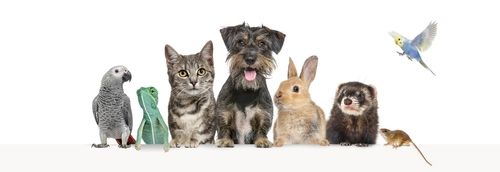 While paying tribute to the dead often seems like a very human concept, there are actually many examples across the animal kingdom of different species going through mourning rituals. Beasts from elephants to crows have exhibited behaviors that have made scientists redefine their preconceived notions on animals and how they process death. Take a look at these examples and learn more about these fascinating habits.
While paying tribute to the dead often seems like a very human concept, there are actually many examples across the animal kingdom of different species going through mourning rituals. Beasts from elephants to crows have exhibited behaviors that have made scientists redefine their preconceived notions on animals and how they process death. Take a look at these examples and learn more about these fascinating habits.
The Habits of Crows
Crows are considered some of the most intelligent birds on the planet. These dark birds have been observed utilizing tools and making complex decisions when faced with difficult problems. Beyond this, they have also shown signs of holding crude funerals for their dead. When a crow dies, the rest of the flock will gather around the corpse. The crow will keep any potential predators away, violently pecking at any who come to eat at the body. In some cases, former mates of the crow will become intimate with the body one final time before the flock moves on.
The Movements of Elephants
There are many examples of elephants mourning their dead. First, elephants sometimes bury their dead. Herds have been observed covering corpses with leaves and debris in a style very similar to a funeral. What’s more, elephants will traverse long distances to pay respects to dead ones far away. One of the most startling examples of this happened in 2019 when two separate herds of elephants were observed convening where a human animal worker had passed. The herds were familiar with the man and, somehow, caught word of his death.
The elephants who came to honor the man were said to walk in circles around the man’s home for two days. After this, they went back to their migratory routes. Scientists are not sure how elephants so far away can learn about one’s passing, but there have been several examples of this happening in recent decades.
The Practices of Dolphins
Dolphins are another species that have been observed acting in incredibly intelligent ways. Unfortunately, they have also been shown with an awareness of death. Mothers who have lost calves will sometimes hold the dead bodies of their babies for long stretches of time before finally letting go. While it is difficult to ascertain whether or not dolphins feel grief the way humans do, these actions do suggest heavily that this is the case. Dolphins will also remain with the bodies of dead adults of their species for hours after the fact.
The Rituals of Giraffes
Giraffes are another example of animals who have been shown to pay respects to their dead. There have been many recorded instances in the wild and in zos where giraffes will remain with the bodies of relatives after death. In many cases, the giraffes who are still living will lick at and nuzzle the bodies in a way that humans do when hugging a loved one goodbye. While heartbreaking in many respects, the way giraffes handle their dead does show that they are capable of deep emotional intelligence.
The Rites of Monkeys
Finally, it should come as no surprise that most primates have been observed holding some type of mourning or burial ritual. From chimpanzees to orangutans, there are countless documentaries and papers detailing the various habits exhibited by these species. Since humans are said to have evolved from primates, it makes sense that some of the earliest examples of human beings caring for their kind take the form of funeral rites.
The Animal Kingdom Understands Death
When it comes to death, all creatures living on the planet must deal with the concept. While humans long thought it was humanity’s curse to know about death in advance, scientists have observed countless examples of animals across all kingdoms mourning the dead.